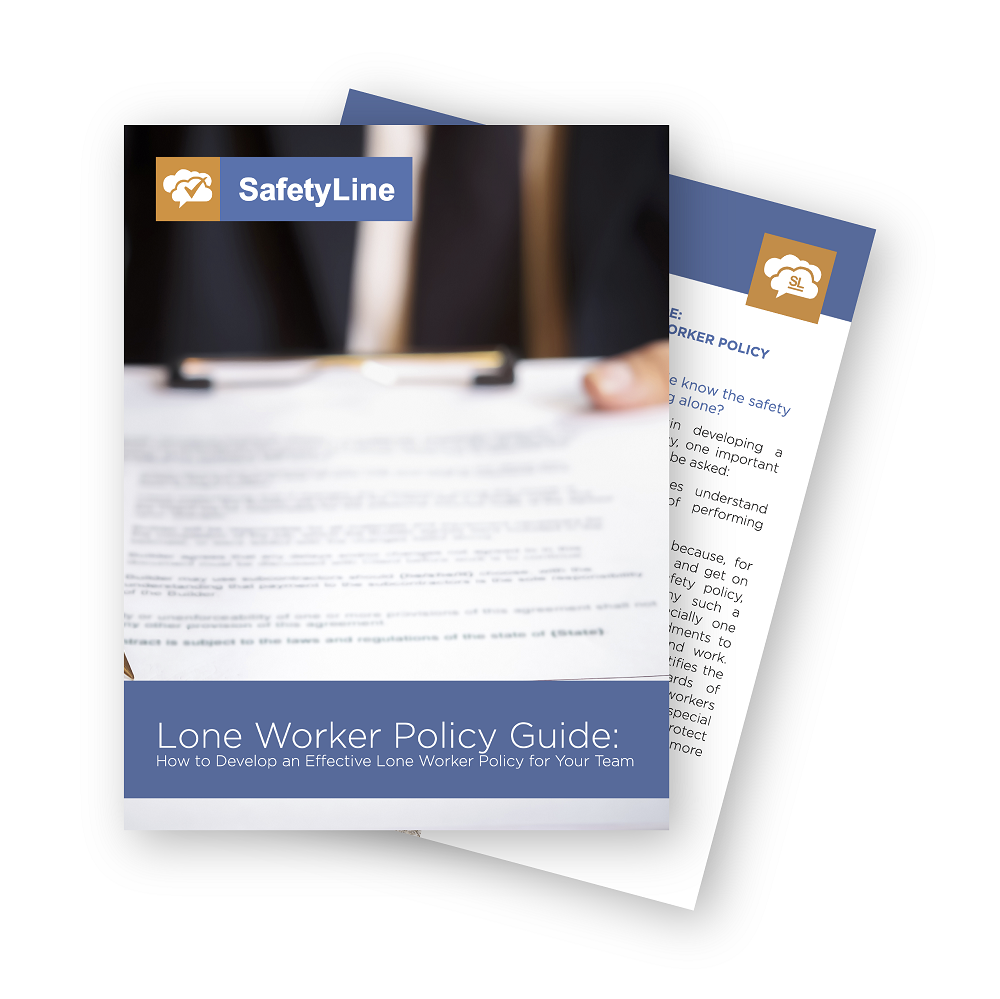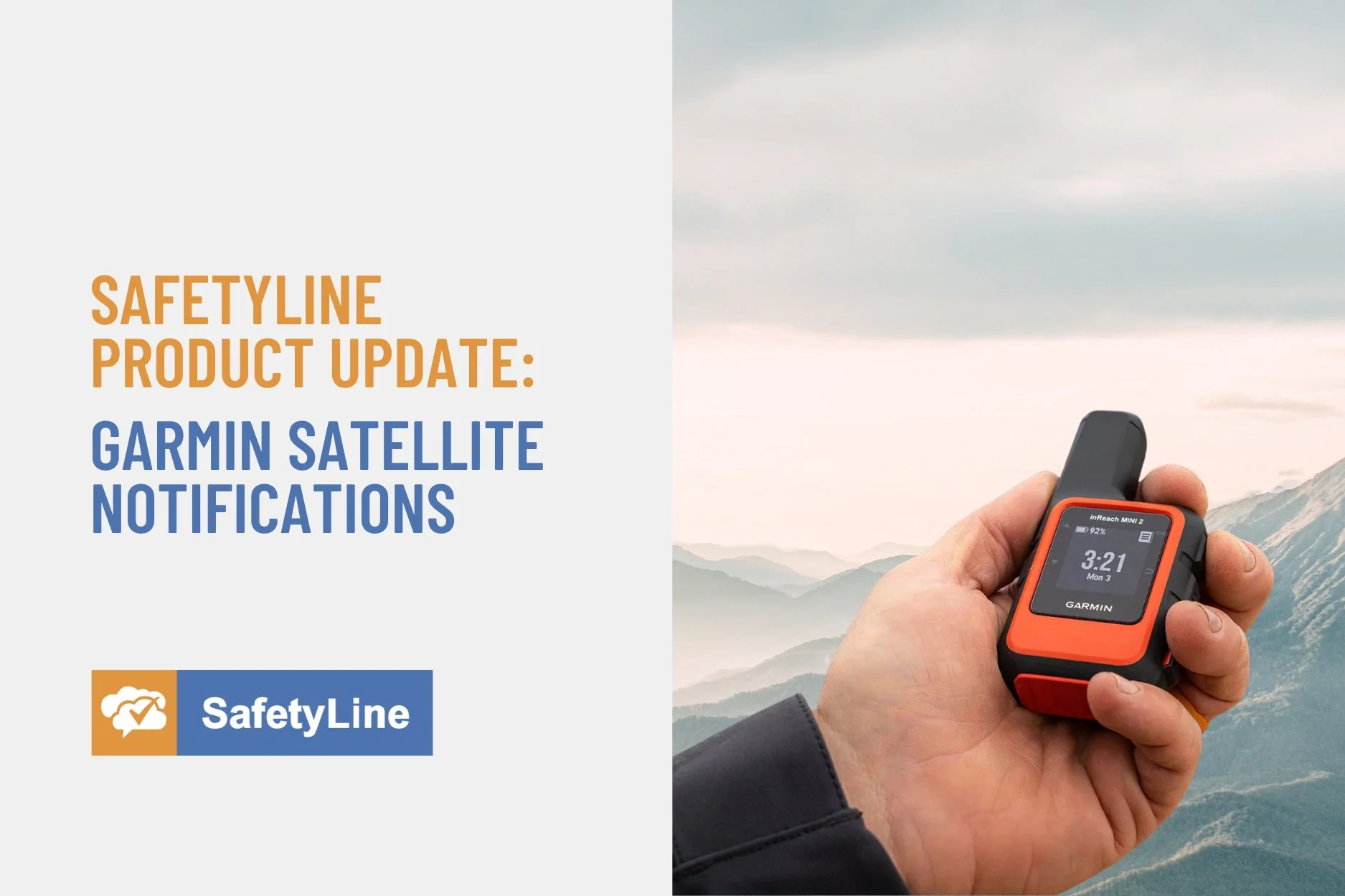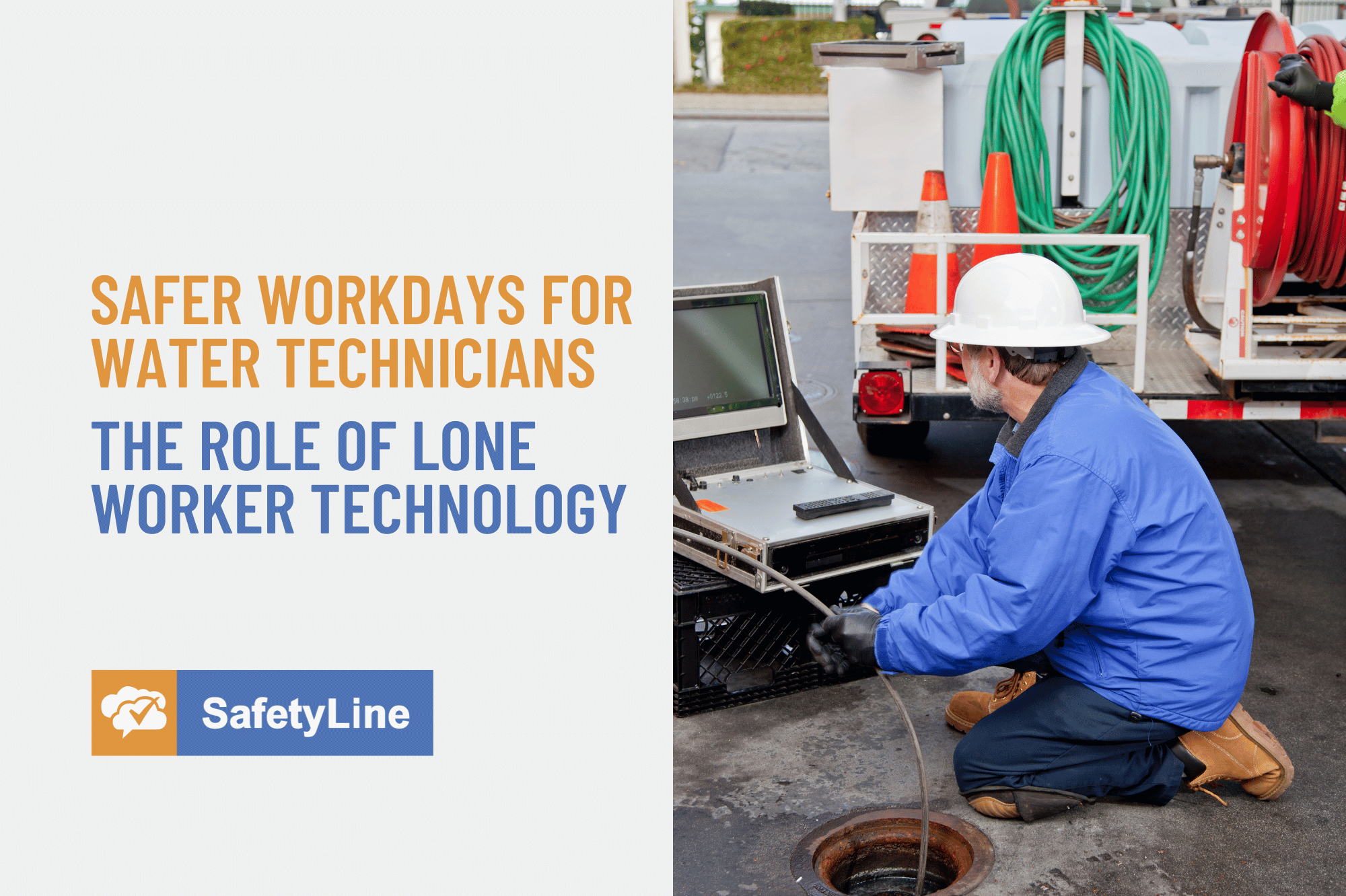Featured Resources
Lone Worker Policy Guide and Template
A lone worker policy is an effective way to ensure that your lone workers are well-educated on your company’s work-alone rules and have extensive knowledge of all workplace hazards that could be encountered on the job.
Hazard Assessment Guide
In the process of doing a hazard assessment for your workplace, it is almost a certainty you’ll learn information about the operational aspects of your organization you were unaware of before the assessment.
View eBook
Develop a Free Lone Worker Program for Small Teams
Developing a free lone worker check-in system is a simple process for small teams that any organization can implement.
View eBook
SafetyLine Blog Categories
General Safety | Lone Worker Safety | SafetyLine News and Updates | SafetyLine Product Updates | Compliance, Policy, and Regulations | Downloadable Resources |
Emergency Preparedness for Lone Workers in Nonprofit Organizations: A Complete Safety Guide
Nonprofit professionals are among the most adaptable in today’s workforce. They often wear multiple hats within their organizations, which makes them highly skilled—but also exposes them to a wider range of workplace hazards.
Nonprofit workers serve organizations that deliver public or social benefits rather than profits. Their work often takes them into communities, where they face occupational safety risks—especially when working alone or traveling to remote areas.
SafetyLine Product Update: Garmin Satellite Notifications
SafetyLine alerts are supported on Garmin satellite devices, including the Garmin inReach, inReach Mini, and other widely used models. This enhancement reflects our ongoing commitment to expanding device compatibility and ensuring reliable communication for lone workers in remote environments.
What If No One Checks In? The Hidden Risk Facing Water Utility Technicians Working Alone
Many people in the water utilities sector work alone, performing high-risk tasks such as after-hours maintenance, pump station inspections, and confined space entries. Without federal legislation to protect them, water workers and lone workers are especially vulnerable to occupational dangers and require extra lone worker monitoring like SafetyLine when dealing with serious workplace hazards.
A Business Leader’s Guide to Managing Lone Worker Safety in a Digital‑First World
We are living in a digital-guided reality. That’s a fact. Our lives are guided by technology, but also connected and protected through it, a truly beneficial relationship. Remote and lone work is becoming increasingly common because of technology, allowing people to work from anywhere in the world – but also face the accompanying workplace hazards and challenges.
Safer Workdays for Water Technicians: The Role of Lone Worker Technology
Cities rely on vast networks of water infrastructure to support homes, businesses, and everyday life. Behind the scenes, skilled water technicians work tirelessly to ensure that clean, safe water flows where it’s needed—and that wastewater is treated responsibly. These professionals operate in a variety of roles across urban facilities, including:
Stop Relying on Manual Check-Ins: Why It’s Time to Automate Check-Ins
Human error can cost more than money. If a person makes a simple mistake while at work, they could be putting their coworker’s life at risk. Depending on the industry and the workplace hazards, a minor mistake could cause a major consequence in the workplace – in fact, the leading cause of accidental death in the United States is from medical errors or unintentional injuries. Human error will happen from time to time, but it is the employer’s responsibility to make sure it does not occur in the workplace.
Implementing a Lone Worker Solution in Home Healthcare: From Risk Management to Daily Routine
With nearly 5 billion smartphone users, mobile technology has transformed how we live, work—and stay safe. In home healthcare, where staff often work alone in unpredictable settings, lone worker solutions play a vital role in protecting those without direct supervision.
How Do You Know If Your Lone Worker Program Is Successful?
A successful lone worker program can mean the difference between safety and serious harm. For employees who work alone or in isolated environments, these programs serve as a dedicated safety net—ensuring support is available in the event of an emergency, injury, or medical issue on the job.
Top Lone Worker Monitoring Tools for 2025 – Compare Features & Pricing
What are your top safety priorities for 2025? Is lone worker safety one of them? If it is a major priority within your organization, then choosing the right lone worker monitoring tool should be, too. The right technology can mean the difference between a near-miss and a tragedy—and ensure your team stays connected, compliant, and protected no matter where the job takes them.
Keeping Non-Profit Workers Safe: A SafetyLine Testimonial
For non-profit organizations, ensuring the safety of their employees—many of whom work in unpredictable environments—is a top priority. Sharon, a long-time user of SafetyLine, has experienced firsthand how the system benefits both frontline workers and supervisors. Her journey with SafetyLine spans over six years, evolving from a user in the field to a supervisor responsible for her team’s well-being.
The Role of Lone Worker Solutions in Ensuring Caregiver Safety
In order to protect people in the caregiver industry from the increasing occupational hazards of workplace violence, home healthcare workers must be provided with the proper caregiver safety solutions providing features that can address the complex, challenging work environments they must work in.
How Lone Worker Apps Protect Home Healthcare Workers
At some point in our lives, we are likely to require the services and support of a home healthcare worker. We could be helping a loved one or ourselves with professional medical, mobility, or other types of help in the comfortable environment of our homes. However, this excellent service to the community comes with a significant risk to the safety of the workers. There are approximately 3.2 million home health and personal care aides in the United States.
How Lone Worker Apps Enhance Safety in Rural Water Inspections
Due to the nature of their work in remote areas, these inspectors face unique occupational hazards. Limited cellular connectivity can lead to communication challenges and hinder accurate location tracking during emergencies. Isolation only compounds the risks, making safety a critical concern for these workers.
Significant Strides Are Being Made in Home Healthcare – But Is It Enough?
Government bodies are taking steps to protect home healthcare workers. However, are the measures enough to protect these people from the serious safety challenges that they are facing every day? And are these measures being implemented fast enough with violence against healthcare workers increasing in both frequency and severity.
Proactive Safety for Home Healthcare Workers
We must prioritize the safety of workers who provide essential, hands-on care, along with emotional and physical support, in patients' homes. This includes hospice and home care professionals who care for individuals who are chronically ill or disabled, requiring ongoing assistance.
These workers are vital to a healthy society, yet they face increasing challenges in their roles. To address these issues, the National Association for Home Care and Hospice (NAHC) is hosting the 2024 Home Care and Hospice Conference and Expo from October 15 to 17 in Tampa Bay, Florida, an area still recovering from the previous hurricanes.
Common Questions and Answers for SafetyLine Buyers
Individuals involved in purchasing and researching SafetyLine come from a variety of roles within an organization. This includes high-level executives such as CEOs and presidents, as well as administrative assistants and the lone workers who will use the technology. Each role brings a unique perspective and set of requirements when evaluating lone worker safety solutions tailored to their team's specific needs and challenges.
How to Choose the Right Lone Worker Safety Solution for Home Healthcare Workers
In October 2023, a home healthcare nurse was murdered visiting a halfway house. As part of her job, she was providing medications to a client with a record of sexual assault – alone. She was one of nearly 1.5 million home healthcare workers in the United States who enter clients’ homes to provide essential care and services for people with disabilities or chronic conditions. According to the OSHA, home healthcare workers can include ‘home health aides, personal/home care aides, companions, nursing assistants or home health nurses’ and “are employed in patients' homes and in community-based services such as group homes.”
SafetyLine App Update: Immediate GPS Breadcrumbs
At SafetyLine, we are dedicated to continuous improvement and innovation to ensure the safety and well-being of lone workers. We are thrilled to announce a new enhancement that will significantly improve our communication capabilities, user experience, and emergency response efficiency. Here’s a detailed look at our latest app update for July.
Sending the Perfect Check-In Message for Lone Workers
A simple check-in from a worker can significantly enhance safety. This single step allows lone workers to confirm their well-being with their employer, alleviating personal safety concerns while working in isolation. Beyond the action itself, safety check-in messages serve as crucial communication channels for occupational safety monitoring and management.
There are three key reasons why a check-in message should include more than just the lone worker's GPS coordinates, which, while essential, are only one part of the larger picture:
Implementing SafetyLine With Your Existing Lone Worker Safety Protocols
These manual check-ins are problematic because they are at risk of human error, and employees will sometimes need to remember to check-in. Likewise, an employer will only notice if a lone worker checks in to confirm they are okay. This risk is exceptionally high in larger organizations where managers may need to keep track of teams larger than 30+ people – it can be challenging and prone to mistakes using traditional methods such as spreadsheets to keep track.























